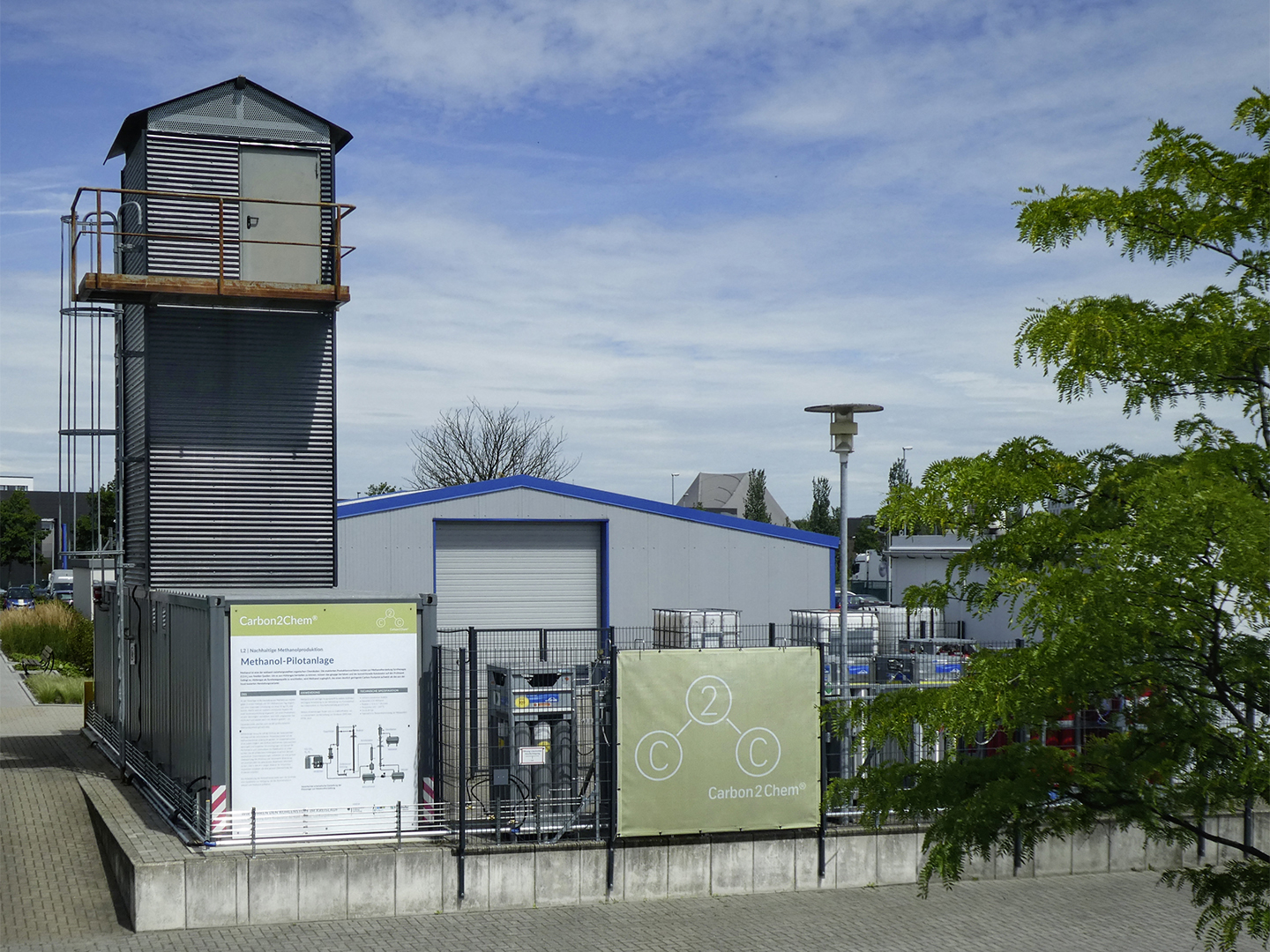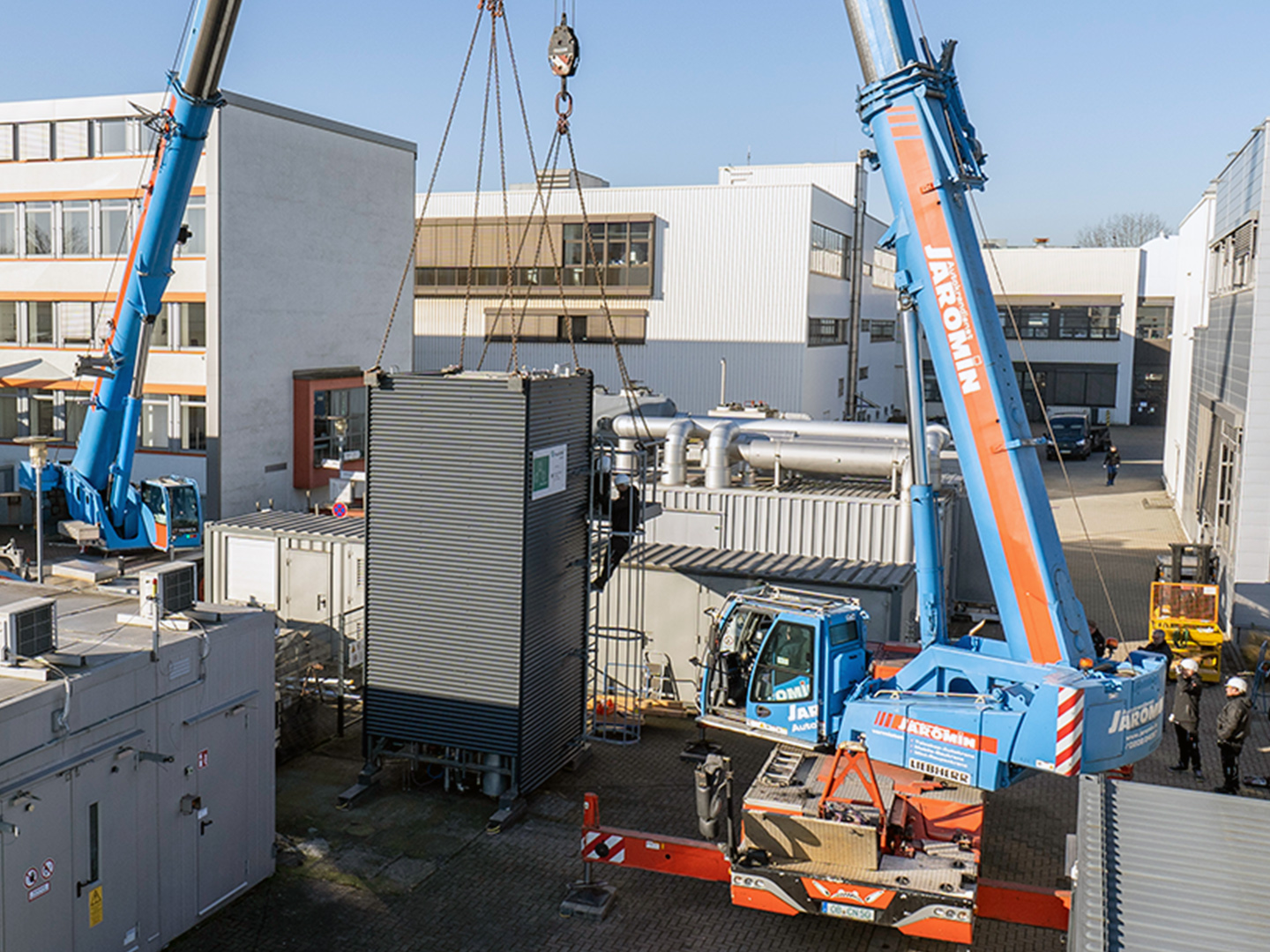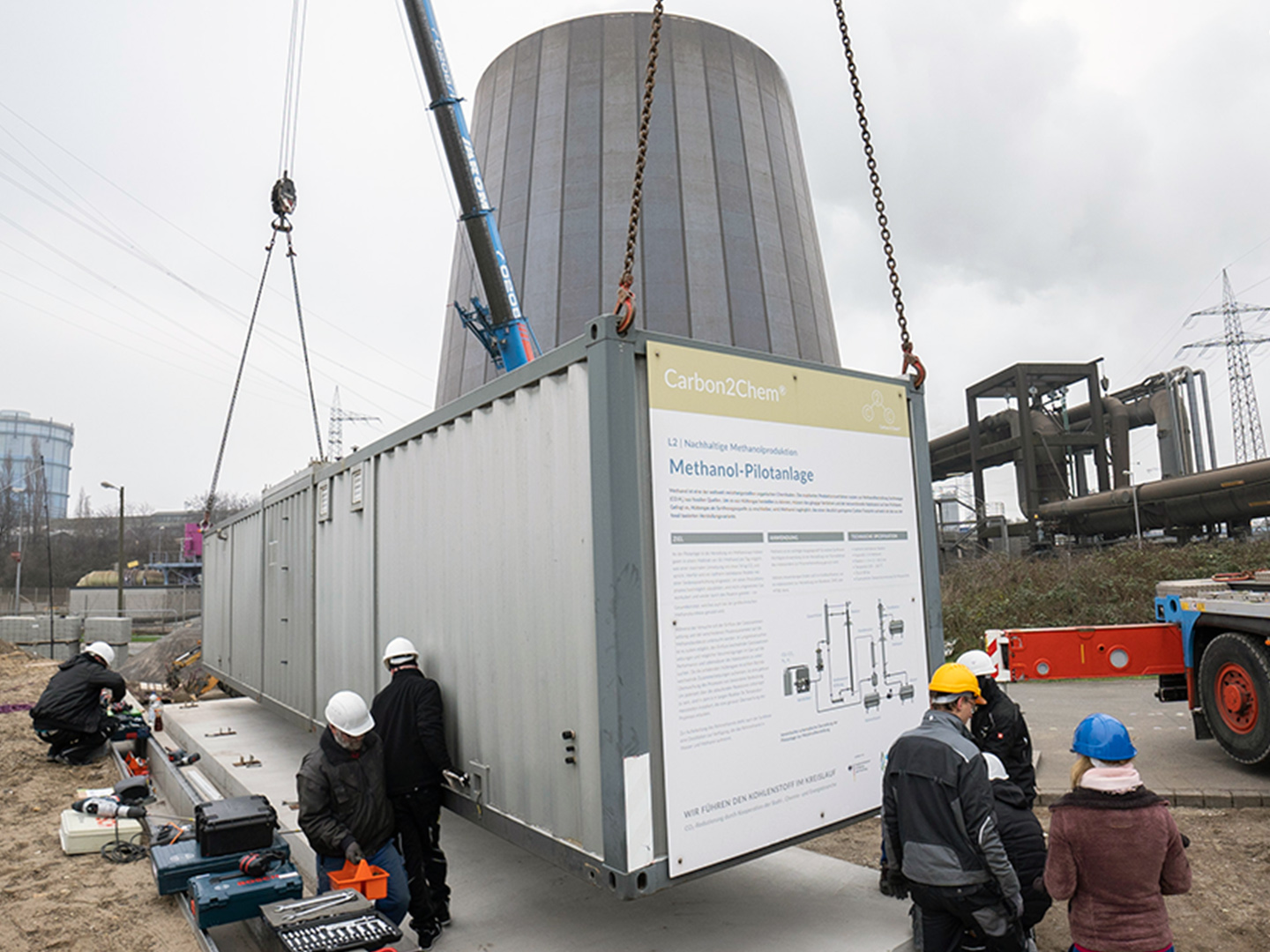
© Fraunhofer UMSICHT
In order to make steel production more climate-friendly, researchers at Fraunhofer UMSICHT are developing a process in the Carbon2Chem® project with which metallurgical gases can be recycled. The focus is on the production of methanol. After a development phase lasting several years, pilot-scale tests followed on the institute’s premises in Oberhausen starting in 2020. Now the methanol plant was moved to the steel mill of thyssenkrupp Steel Europe AG in Duisburg, where it is operated with gases from ongoing steel production.
The metallurgical gases produced during steel production – consisting of hydrogen (H2), nitrogen (N2), carbon monoxide (CO) and carbon dioxide (CO2) among others – are mostly thermally utilized at the smelter, i.e., burned in the first step. In the end, the process releases large amounts of climate-damaging CO2. Since 2016, Fraunhofer UMSICHT has been researching together with other project partners from industry and science on a solution with which this CO2 can be recycled and kept in cycle. One of the target products of the joint project Carbon2Chem® is the base chemical methanol, which is currently still obtained from fossil raw materials. By recycling CO2, the researchers are addressing two issues at once: The climate gas is not released into the atmosphere, and at the same time it forms the basis for sustainable methanol production.
Successful scaling of the test plants
The first promising test series on a laboratory scale were followed by scaling up to a pilot plant. At its core, it is based on an existing container plant and has so far produced 3 liters of raw methanol – containing about 2 liters of pure methanol – per hour. In parallel, the researchers have simulated the entire network and created a digital twin.
“This allows us to define a technically possible framework at any time. And considerably more operating points can be examined than would be possible in a limited test period,” explains Tim Schulzke, who is responsible for the pilot plant and the individual test series at Fraunhofer UMSICHT, among others.
Until now, the plant was operated with cylinder gases at the institute located in Oberhausen. These clean gases were mixed according to the composition of the various metallurgical gases. To optimize the process for following industrial methanol production, the plant has now been moved to the steel mill of thyssenkrupp Steel Europe AG in Duisburg, where it is operated with gases from ongoing steel production. To ensure that the blast furnace gas can be used for methanol synthesis, it is previously cleaned with the assistance of thyssenkrupp Uhde’s pilot plant.
Move from Oberhausen to the technical center in Duisburg
First, all building authority permits had to be obtained for this and all preliminary work – e.g., pouring the foundation – had to be completed. And for project coordinator Tim Schulzke and his team at Fraunhofer UMSICHT, Verena Angenendt and Johannes Voß, the preparations also began several weeks before the actual move: The pipe connections between the individual components were decoupled and the external electrical connections were dismantled
The two-day move then started on March 2. At the beginning of day one, the plant was disassembled ready for transport. After the roof and the tower had been lifted off, attachments such as the shaft ladder and the external platform could be dismounted. Two truck cranes were used for this, which also did the loading work onto the waiting semitrailer trucks. At least, the container weighs a good 13 tons, plus another 3.5 tons for the remaining parts.
In Duisburg, reconstruction began on the second day.
“Experience has shown that spontaneous changes in plans are always to be expected with projects of this kind. That’s why we had planned a large time buffer and prepared for a long day,” says Tim Schulzke. However, everything went as planned. “Even the pinpoint drilling of the anchor holes in the concrete foundation and the subsequent screwing worked smoothly.”
The last thing the removal team did was to reassemble the attachments to the tower and put everything, including the roof, back on the container. Thanks to the good cooperation of all the trades involved, the move was completed in the early afternoon, a good two and a half hours ahead of schedule.
Tim Schulzke: “I’m really very pleased with the teamwork and the way the whole operation went.”
Next step: industrial methanol production
Once the final installation work has been completed, the researchers will start a first test run for commissioning in mid-July. The next milestone is the daily production of 75 liters of raw methanol in continuous operation. The test phase should be completed by the end of May 2024, so that the transition to industrial methanol production from metallurgical gases can begin.
“We from thyssenkrupp Uhde are looking forward to a successful start-up of the pilot plant and eagerly await the first test run. Our proven technologies make it possible to purify metallurgical gases so that they can subsequently be used for methanol synthesis. We will use the operation of the pilot plant to further optimize our green methanol technology,” says Ralph Kleinschmidt, Head of Technology & Innovation at thyssenkrupp Uhde.
An industry-crossing process
And it’s not just steel mills that could benefit from the Carbon2Chem® project in the future: Due to the modular design of the methanol plant, it is possible to transfer the process to other CO2-emitting industries – e.g., waste incineration plants or cement works. During cement production, CO2 is always released due to the chemical reaction when lime is calcined.
“The technology for CO2-based methanol production is therefore a sustainable and long-term investment even when the steel industry has completely switched to hydrogen,” concludes Tim Schulzke.
Methanol
Important chemical products based on methanol are, e.g., formaldehyde, which is used to produce adhesives and synthetic resins for the manufacture of chipboard or tableware, and acetic acid for the production of polymers. Methanol can also be converted into fuels – gasoline, diesel, kerosene – or serve as a fuel itself.
More Information
- Press release: Steel mill gases as raw material for green methanol
- Interview: Methanol production using real gases
- Interview: sustainable methanol production
- Interview: dynamic methanol synthesis
- More about Carbon2Chem®
Source
Fraunhofer UMSICHT, press release, 2023-06-21.
Supplier
Fraunhofer-Institut für Umwelt-, Sicherheits- und Energietechnik (UMSICHT)
thyssenKrupp Uhde
Share
Renewable Carbon News – Daily Newsletter
Subscribe to our daily email newsletter – the world's leading newsletter on renewable materials and chemicals















